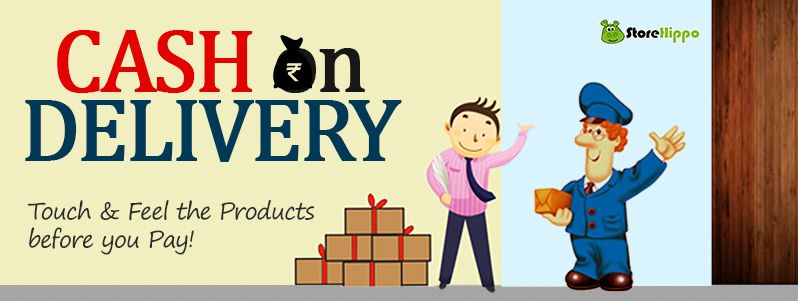Cash on Delivery (COD) is the modern avatar of ordering products online, receiving products at your home and then paying for it. Remember the grocery shop down your lane? You place your order on the phone, the neighbourhood retailer delivers a product right at your doorstep and then collects the money, making life so much easier and simpler for you. Until a few years back, we were accustomed to receive postal or courier packages but today we order online products, receive products from logistics companies and often opt to pay for them at the time of delivery - referred to as COD in e-commerce parlance.
Online Shopping in India is getting popular day-by-day because of increasing penetration of Smartphones and better broadband connectivity. The growth of online shopping sites in India has given rise to option of Cash on Delivery. It is an effort by the e-commerce and m-commerce companies to reach a considerable number of customers, who are still not comfortable about paying online using a credit or a debit card. And the path they have embarked upon to reach out to them is “Cash on Delivery” (COD).
Cash on Delivery as a payment option has existed for a long time, but is fast becoming a popular payment option in some countries such as India. According to studies and research, COD accounts for 50 to 80 per cent of online transactions in India. For the e-tailers, this mode of payment has given them access to smaller towns and cities where plastic money is not yet so popular, and has helped them acquire first-time customers rapidly.
Hippo gives you some of the top benefits of COD
Suits Indian economy:
India remains a cash-driven economy and lacks in number of credit cards. As per the Reserve Bank of India, the number of credit card users in India is less than 1% of the total population. Moreover, many cardholders avoid paying with plastic money because of security concerns. Also, there is a limit on the value of card transactions, and high-value transactions require the use of COD.
Shoppers’ Psyche:
COD is a link in between online and brick-and-mortar retail and fulfils the psyche of Indian shoppers to see, touch and feel a product before actual paying for it. Also, the customers do not fear non-delivery of ordered products.
Trust:
Trust is a driver for COD since not all e-commerce firms have reputed names. As a new customer if you are not sure about the company or the detailed product specifications, then COD offers a risk-free process.
Availability of Cash:
People tend to have ready cash in hand for their daily requirements. In fact, many people in Tier-II and III areas prefer to pay by cash.
Product specific factors:
Some product-specific features require the option of COD for e.g. in fashion and footwear categories, many customers wish to try the product to check for size and fit. Try it, Pay for it- is the rule for some.
Wider reach:
COD offers a wider reach as many customers like students and housewives who typically do not have a credit/debit card can place orders online.
Beat the competition:
The e-tailers who offer COD can offer this service as a differentiator with respect to competition.
Simplified business process:
This is a case specific feature. In case the customer chooses not to accept the delivery of the refund process is eliminated as no payment has been made.
Like two sides of a coin, there are some cons of COD:
Longer supply chain:
COD adds a layer to the supply chain because cash handling stretches the settlement period of online retailers and courier companies. The cash collection cycle of the e-tailers is increased.
Risk of pilferage:
Another problem which looms for the retailers is the increased chance of pilferage in cash handling.
More cost for the retailer:
The COD option can only be offered if retailers have an logistics partner to deliver goods and collect payment on their behalf. This adds to the retailer's cost which needs to be accounted for in the overall product pricing.
Order Cancellations:
Cancellations and bogus orders are another pain point for the retailers. A staggering 20% of COD orders on Indian e-commerce sites are returned! This results in loss of an opportunity since there was no sale and the cost of shipping the product to the customer has already been incurred.
Hippo’s Conclusion:
The pros of COD are far outweighed by the cons. The COD option helps to increase sales for Indian online retailers. Low card penetration clubbed with the hesitation of Indians to make online payments, makes COD an indispensable option. It is an attractive way to shop and creates an offline payment gateway. StoreHippo creates online stores which are pre-integrated with reputed logistics companies like FedEx, Blue Dart, Delhivery and Aramex to offer unmatched logistics solutions for the online retailers.
Menu

